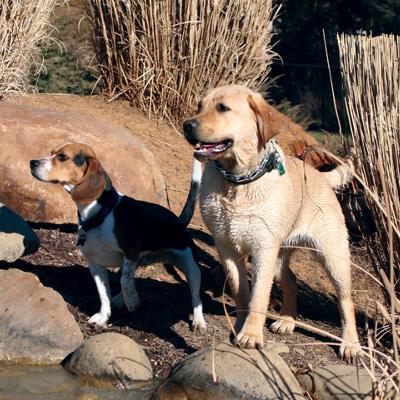Courtesy of US Fish and Wildlife Service
 Hunting season is in full swing across the country. For some pets this means joining their owners on the hunt (if that's your dog, check out SportDOG's hunting dog gear). But for most pets, especially those in rural areas, this means some areas are now off limit.
Hunting season is in full swing across the country. For some pets this means joining their owners on the hunt (if that's your dog, check out SportDOG's hunting dog gear). But for most pets, especially those in rural areas, this means some areas are now off limit.
Even though hunters are encouraged to recognize their target before they shoot, here are some things you can do to protect you and your pet.
Know when it’s safe to go out.
Most hunting seasons run through the fall and winter, but each state and each type of hunting has its own timeline. Check with your state’s hunting or wildlife agency to learn when hunting seasons starts and stop to know when it’s safe in those areas.
Learn where the hunting areas are.
Depending on your state’s regulations, wildlife areas are a definite watch out. In addition, many private land owners also authorize hunting on their property. Even public hiking trails can run parallel to private property and have hunters nearby. Make sure you know the area you and your pets walk in is safe year-round.
Use sight and sound to your advantage.
“Hunter orange” is a must have for taking a walk in or around wooded areas. While unrecognizable to deer and other animals, the clothing shade is bright and easily recognizable to humans. And wouldn't you know, there are even hunter orange collars, leashes, bandanas, and vests to ensure your dog is visible. Add sound alert by placing a bell on your pet's collar for added protection.
Keep your pet contained or on a leash.
For inside and outside pets, it is essential to prevent them from wandering. Leashed potty breaks, a PetSafe containment system, or a tie-out are great options. Even though hunting is prohibited at night in most areas, having your dogs and cats secure at all times is the best way to prevent an accident. What about you? Do you live or walk your dogs near a hunting area? How do you keep them safe?












